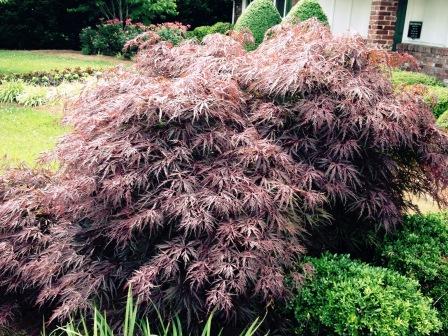Planting Japanese Trees

PLAN YOUR WORK AND WORK YOUR ‘PLANT’
Planting a Japanese maple tree requires the same steps you should take when embarking on any other project have chosen.
Get all the information you can about the item you’re going to be working on. In this case it’s a particular tree which may require certain cautionary procedures. You must determine whether your location and climate will support it.
The initial stage of planting a Japanese maple tree, whether individually or on a commercial scale, is a decisive moment for the life of plant. The chosen site for the plant either indoors or outside should be selected keeping in mind the sunlight, the flow of air and the condition of soil.
Assemble all of the tools you will need before starting. The digging of the site is the first step when you have made sure that the site is fulfilling all the necessary elements.
Digging involves certain steps that should be flowed in order to get the desirable results. Take the soil out of the ground noticing its condition and whether it will need to be fortified by adding materials to stimulate growth. The amount of soil to be removed from the ground usually depends upon the size and spread of the roots. But the hole you dig should be 2 to 3 times larger than the size of the root system. This is to accommodate the future expansion of the roots which need extra space. If this proportion is ignored at this stage then it is possible that the root system may die from being too compressed and/ or, if it survives, may intermingle with the neighboring trees.
INDOOR PLANTING
If you are planting the tree indoors then you will need to go shopping for a pot or container large enough to accommodate the structure of roots that should be spread across the whole container, so that the plant will be able to easily manage its roots over the period of time. The roots are most sensitive part of the pant and need extra care and attention.
Think of the roots as a human brain, they control all the major functions of the plant including transportation of water throughout the plant so too much expansion of roots at this stage can cause them to lose control of the different sections of the plant.
Always try to place the plant in a container in the best possible way which usually means in the center of the container, this is a reminder because at this stage you can easily adjust the position of the plant which becomes quite difficult once the plant is fully established. (Note: Zen Buddhists consider the center of the container to be where God lives.) After doing this you can fill the rest of the container with the suitable soil.
The tree, most of the time comes in a bag made up of jute fabric, there is no need to remove it before putting the tree into the soil, and the reason behind this suggestion is that the jute fabric will disintegrate by itself. But to ensure that the roots will spread across easily you can remove the bag. If the bag is made up of any other un-dissolvable material then it should be certainly be removed.
Some of the larger trees are mostly available with baskets. Before planting the larger trees you must remove all the metallic objects attached with the baskets, but it is suggested not to remove the basket as this action can damage the root system that is securely placed inside the basket. One thing that should be taken in account at this stage is to ensure that the roots get easy access to the soil and this can be achieved by drilling or cutting some openings into the basket.
After planting the tree make sure to water the plant immediately so that it can recover all the moisture that is lost during the planting phase. You can also try making a hoop-ring around the tree in order to limit the supply of water only to the single tree, in most cases, without this hoop-ring the water will not reach properly to all areas of the tree’s root system.
Have A Great Story About This Topic?
Do you have a great story about this? Share it!
Order Your New Landscape Design Today!
Always Design Before You Plant!
Click The Above Link To Get Your Dream Design Started Now!

Privacy Disclaimer About Contact This Site Built: Solo Build It
Copyright © 2003 - 2023 by Web-Landscape-Design-Ideas.com.
All rights reserved.

